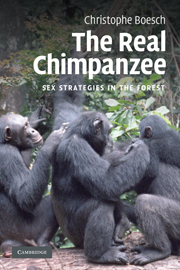Book contents
7 - When sex becomes destructive
Published online by Cambridge University Press: 05 July 2015
Summary
Louis David, the famous French romantic painter, was the official artist of the emperor Napoleon. One of his most lavish grandiose paintings, exposed today in the Great Gallery of the Louvre in Paris, symbolized the essence of human wars in the classic episode of the Romans kidnapping the wives and daughters of the Sabins. The painting shows the fights between the Romans and the Sabins, who were taking revenge for the kidnapping of their women, at the dramatic moment where the women holding their babies interposed themselves between the swords of their husbands and the spears of their fathers! David's painting illustrates vividly my point of view about war, in that the Sabin women were exposing the intricacy of the situation between enemies that are at once kin and killers. Furthermore, isn't David suggesting that the competition of men gets out of control as women and babies are the primary victims? Make war to get love! Or is it love that makes war possible? I would like in this chapter to concentrate on the question of why in humans sex is at the base of war and why women seem to suffer the most from it.
In a review of 230 human tribal groups, Keeley (1996) found only eight that sometimes spared the lives of adult male captives, while in the majority, women captives were kept alive to be used as sexual partners and/or as a cheap workforce. Sex and women are commonly mentioned as the principal reasons for war: within 186 human societies, blood feuds around marriages between kin groups are reported to represent the majority of the cases of violence. Further, often the more exchanges there are, including marital, between human groups, the more conflicts and wars are likely to occur, as in New Guinea.
- Type
- Chapter
- Information
- The Real ChimpanzeeSex Strategies in the Forest, pp. 138 - 159Publisher: Cambridge University PressPrint publication year: 2009



